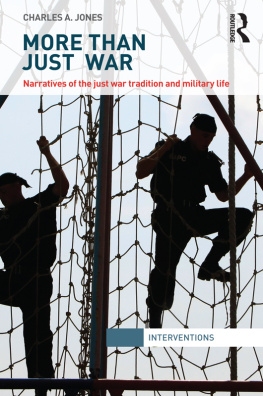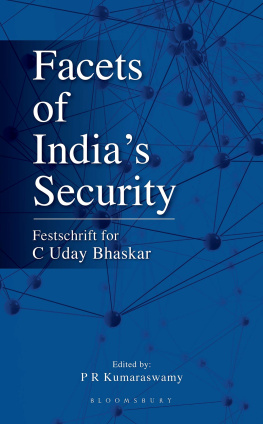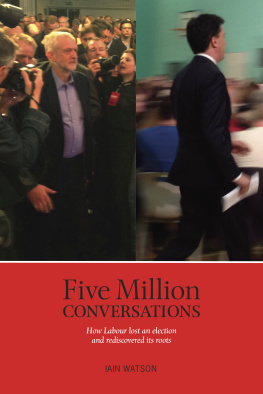Fratricide in Battle
Continuum Studies in Military History
Series editor: Jeremy Black
Titles in this series include:
56th Infantry Brigade and D-Day Andrew Holborn
The RAFs French Foreign Legion G. H. Bennett
Reinventing Warfare 191418 Anthony Saunders (forthcoming)
Fratricide in Battle
(Un)Friendly Fire
Edited by
Charles Kirke
Continuum International Publishing Group
The Tower Building, 11 York Road, London SE1 7NX
80 Maiden Lane, Suite 704, New York, NY 10038
www.continuumbooks.com
Selection and editorial matter Charles Kirke, 2012
Individual chapters the Contributors, 2012, except which is QinetiQ Ltd 2011
All rights reserved. No part of this publication may be reproduced or transmitted in any form or by any means, electronic or mechanical, including photocopying, recording or any information storage or retrieval system, without prior permission from the publishers.
British Library Cataloguing-in-Publication Data
A catalogue record for this book is available from the British Library.
ISBN 978-1-4411-5999-1
Contents
Charles Kirke
Paul R. Syms
Charles Kirke
John Ash
Dermot Rooney
Claire Outteridge, Simon Henderson, Raphael Pascual, Paul Shanahan
David Dean
Charles Kirke
Fin Monahan
Al Mosher
Andrew Gillespie
Jorma Jormakka
Charles Kirke
List of Figures
List of Tables
Foreword
Fatalities and serious injuries are inescapable consequences of battlefield operations. Soldiers and their families know the risks that they run when warriors don their uniforms and march to the sound of the guns. Success in battle is the objective, personal sacrifice is invariably the risk that is the soldiers lot. But there is nothing as gut-wrenchingly awful as the realization that a comrade and friend has lost their life, not by the hand of the enemy but by the hand of ones own side. The futility, the emptiness and the despair of that moment is truly a tragedy. This book has the clear purpose of ensuring that the likelihood of such terrible events is better understood and can therefore be reduced, ideally opening a path to the eventual elimination of that dreadful phenomenon known as fratricide.
Breaking the material into three sections, Charles Kirke has marshalled an impressive collection of contributions from a wide range of authors to address all facets of the fratricide challenge. Starting quite logically from an historical analysis, he examines all aspects of the problem and a range of solutions covering both human and technical factors. Increasing sophistication in technology offers many potential possibilities, but these inevitably come at a price. At a time when financial resources are scarce, priorities have to be applied to expensive programmes and too often a so-called Combat ID program, which could reduce the potential for fratricide, fails to be fully funded forcing commanders in the field to resort to procedural safeguards only. However a strong theme in the book argues that despite the march of technology perhaps this problem remains fundamentally a human one. The taking and preserving of life can never be a fully automated process: there will always be the proverbial man in the loop.
One of the most telling chapters is that written by Andrew Gillespie, towards the end of the book. Its title: Judged by Twelve or Carried by Six; the Soldiers Dilemma encapsulates nicely many of the arguments from a contemporary British perspective. In a resource desert, the inexpensive policy of pursuing quick wins and commissioning longer-term research was placed, Gillespie argues, under greater media scrutiny in the light of blue on blue incidents in recent campaigns. Notwithstanding the received wisdom that throwing money at a problem produces the optimum solution, the possibility that emerges from these pages is that money spent on smart technologies does not constitute the silver bullet of success. What would seem to offer the greatest prospect of success is the progressive adoption of an overall system that embraces both technical possibilities and human behaviours.
As this book unfolds, a provisional hypothesis is mooted in which the highest level of situational awareness is presented as the vital backdrop on to which the greatest accuracy in target identification must be overlaid. These two factors are then exposed to the tyranny of timely decision-making. This then begs the question as to how much of this is human activity, and how much of this is the product of technical development? This is the debate that Charles Kirke sets up brilliantly in the book. The urgency and poignancy of the human tragedies that flow from continuing to fail to make substantial progress in tackling the fratricide problem, make reading this book and engaging in the debate that much more compelling. I congratulate Charles Kirke and his co-authors on what they have achieved here. To enter the debate, read on.
General the Lord Dannatt GCB CBE MC DL
Chief of the General Staff 200609
Editors Acknowledgements
I am not sure when this book began to happen. It may have been in 1981 when I found myself with what was then called Battlefield Identification Friend or Foe as part of my portfolio in my first posting after Staff College. It may have been during the flurry of combat identification research activity after the First Gulf War ten years later, with which I found myself associated whilst serving at the Royal Signals and Radar Establishment, Malvern. Or it may have been when I was asked to develop a military teaching portfolio on the avoidance of fratricide in battle at the Royal Military College of Science in 1995. Certainly by 2000, when I became associated with the excellent Human Factors work at the Defence Evaluation and Research Agency, I had developed a strong desire to tell anybody who would listen that fratricide in battle was hugely complex and that it was best addressed in a wide-ranging and systematic way. This is the line I then pursued during a period as an independent consultant and subsequently as a lecturer at Cranfield University. At every stage I have learned and grown in the appreciation of this subject through listening to colleagues, discussing and arguing with them, hearing them speak at conferences and button-holing them during the conference networking sessions. I am grateful to every one of them for their time, patience and engagement in this important subject. I also want to record my thanks to my current employer, Cranfield University, who have allowed me to pursue my interest in fratricide in battle as part of my life there, and to General Lord Dannatt for generously providing the Foreword to this book.
It may be invidious to single out individuals, but Dr Malcolm Cook of Abertay University has been a particular inspiration. The idea to produce a book was originally his indeed he would have co-edited it with me if he had not fallen seriously ill with leukaemia just as it was beginning to crystallize. I am sure his collaboration would have resulted in a better job than I have done alone. Thank goodness he has now come through his illness and is working again.
This book would, of course, have been nothing without the contributing authors. I am extremely grateful for the time and expertise that they have put into their various chapters, and for the punctual and responsive attitude that each of them has brought to this project. I was warned by a colleague at the very beginning that editing a book was like herding cats that I was certain to suffer delays through lack of response on the part of those who were writing chapters. Well, in this case the cats have all been splendid. Such delays as have occurred were all mine rather than theirs, and I take my hat off to them.








